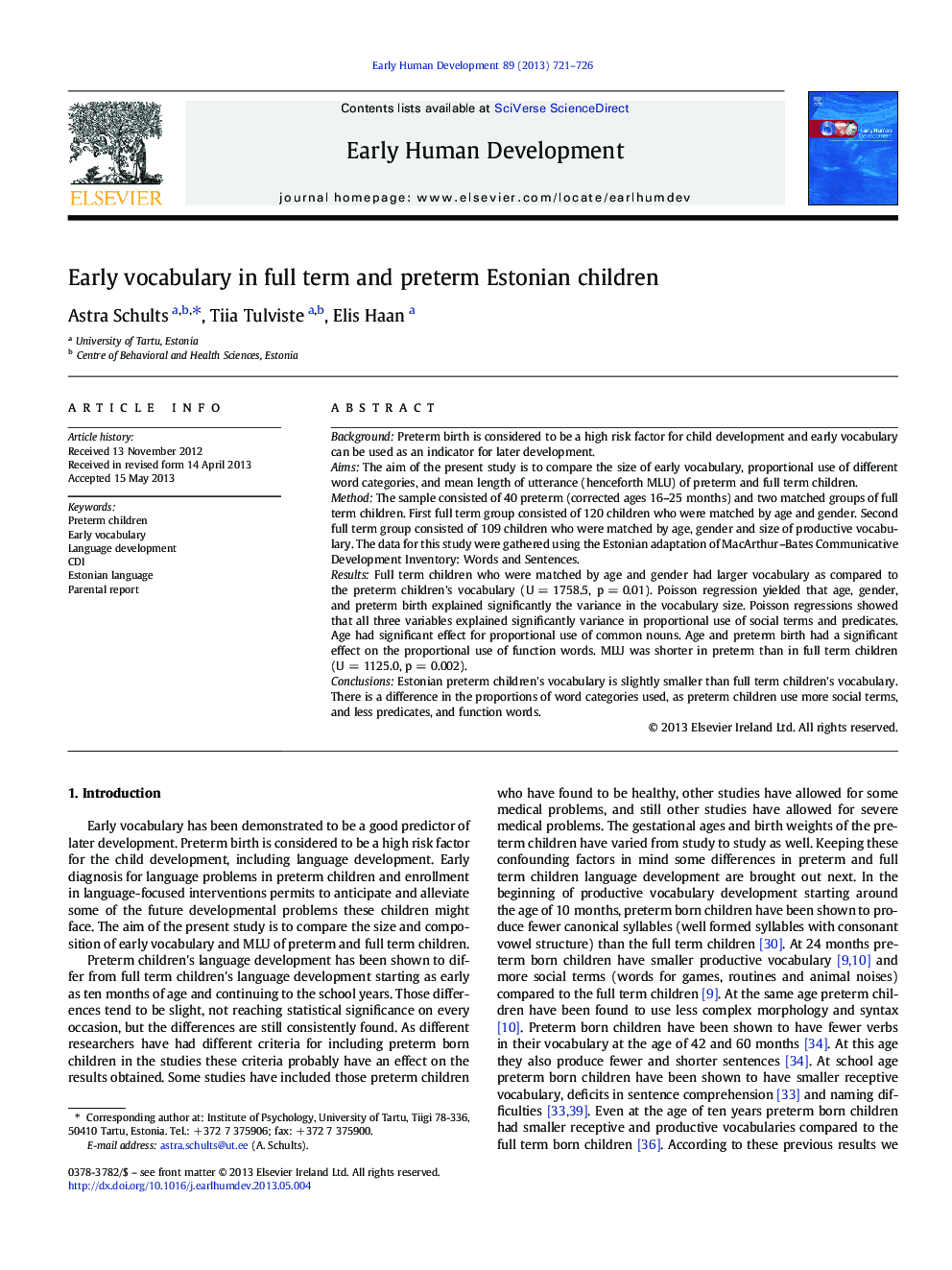| Article ID | Journal | Published Year | Pages | File Type |
|---|---|---|---|---|
| 6172313 | Early Human Development | 2013 | 6 Pages |
BackgroundPreterm birth is considered to be a high risk factor for child development and early vocabulary can be used as an indicator for later development.AimsThe aim of the present study is to compare the size of early vocabulary, proportional use of different word categories, and mean length of utterance (henceforth MLU) of preterm and full term children.MethodThe sample consisted of 40 preterm (corrected ages 16-25 months) and two matched groups of full term children. First full term group consisted of 120 children who were matched by age and gender. Second full term group consisted of 109 children who were matched by age, gender and size of productive vocabulary. The data for this study were gathered using the Estonian adaptation of MacArthur-Bates Communicative Development Inventory: Words and Sentences.ResultsFull term children who were matched by age and gender had larger vocabulary as compared to the preterm children's vocabulary (U = 1758.5, p = 0.01). Poisson regression yielded that age, gender, and preterm birth explained significantly the variance in the vocabulary size. Poisson regressions showed that all three variables explained significantly variance in proportional use of social terms and predicates. Age had significant effect for proportional use of common nouns. Age and preterm birth had a significant effect on the proportional use of function words. MLU was shorter in preterm than in full term children (U = 1125.0, p = 0.002).ConclusionsEstonian preterm children's vocabulary is slightly smaller than full term children's vocabulary. There is a difference in the proportions of word categories used, as preterm children use more social terms, and less predicates, and function words.
